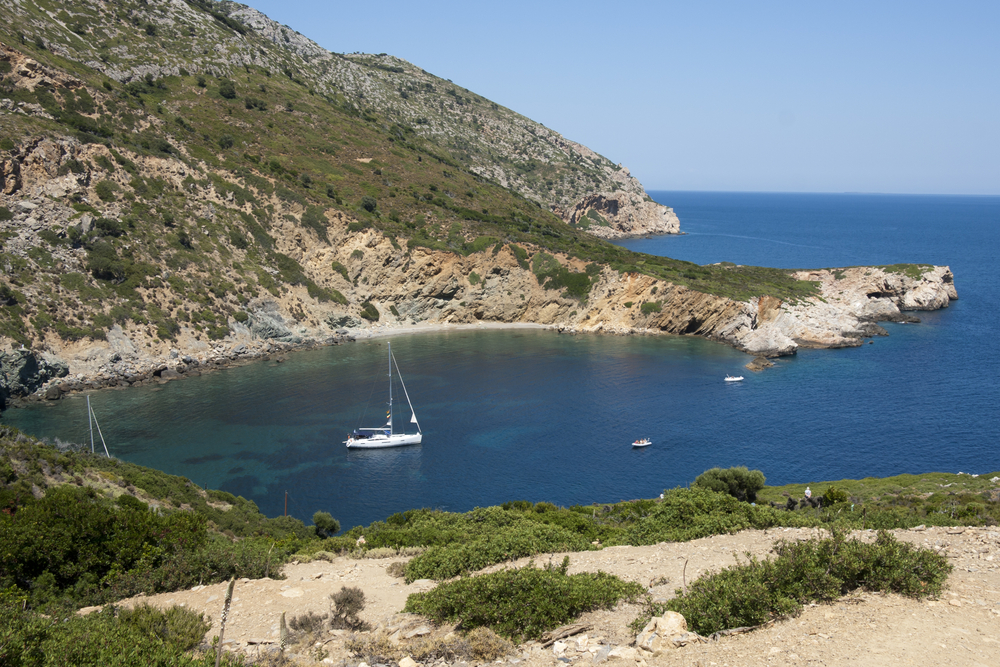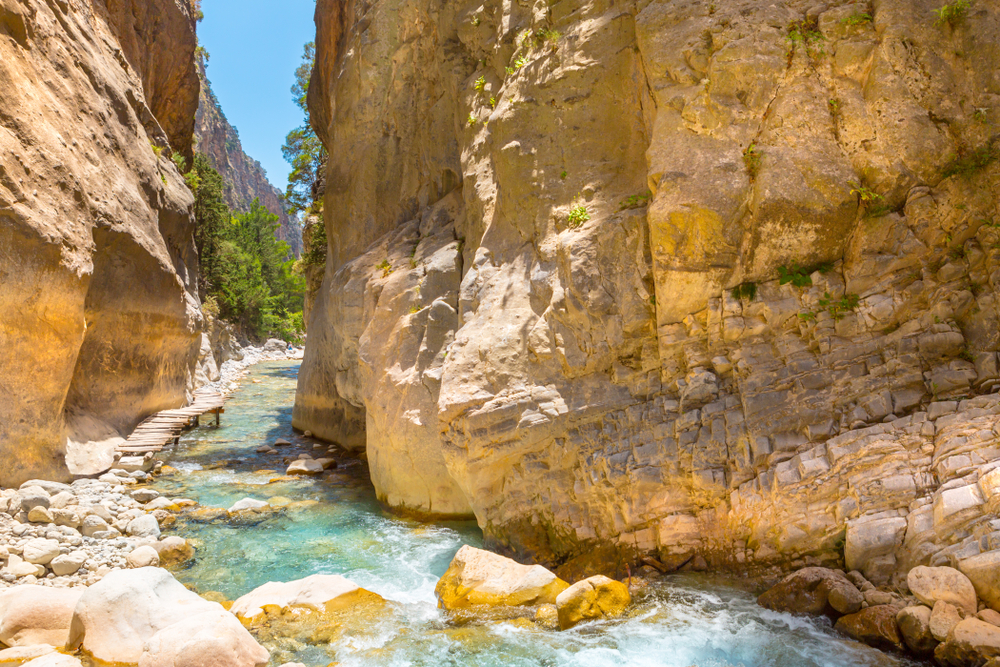Alonnisos Marine Park Overview
Alonnisos Marine Park, known locally as Εθνικό Θαλάσσιο Πάρκο Αλοννήσου και Βορείων Σποράδων, is the largest marine protected area in Europe, covering approximately 873 square miles (2,260 square kilometers) in the Aegean Sea.
Located in the Northern Sporades, Greece, this park encompasses a vast maritime zone, several uninhabited islets, and the island of Alonnisos itself. It is a sanctuary for rare marine life and an area of exceptional natural beauty, drawing researchers, conservationists, and nature lovers alike.
The terrain of Alonnisos and its surrounding islets is characterized by rugged limestone cliffs, hidden caves, and lush Mediterranean vegetation, with forests of Aleppo pine, kermes oak, and a variety of aromatic shrubs.
The coastline features a mix of sandy and pebbled beaches, many of which are accessible only by boat, making them pristine and relatively untouched. The marine environment is just as stunning, with underwater caves, seagrass meadows, and crystal-clear waters that provide essential habitats for marine species.
One of the most remarkable aspects of Alonnisos Marine Park is its role as a safe haven for the endangered Mediterranean monk seal (Monachus monachus), one of the rarest marine mammals in the world. The park’s waters also support an array of other marine life, including dolphins, such as the common bottlenose dolphin and striped dolphin, as well as sea turtles like the loggerhead turtle.
Fish species abound, with groupers, sea bream, and barracudas being common sights for divers and snorkelers. Birdwatchers are also drawn to the park for its rich avian diversity. Species such as Audouin’s gull, Eleonora’s falcon, and the European shag nest along the cliffs and rocky outcrops. Inland, wild goats, hedgehogs, and reptiles inhabit the island’s forests and shrublands, adding to the biodiversity of the area.
Alonnisos Marine Park is a destination that offers a unique blend of adventure, relaxation, and conservation. The island of Alonnisos itself has charming traditional villages, such as Chora, with its stone-built houses and stunning views of the Aegean. Visitors can explore the park through guided boat tours, diving excursions, and kayaking adventures that allow them to experience the pristine waters and hidden caves.
Hiking trails across Alonnisos offer breathtaking panoramic views and lead to secluded beaches, perfect for those who prefer land-based exploration. The cultural heritage of the area is also notable, with archaeological sites, historic monasteries, and shipwrecks that date back to classical antiquity, now serving as underwater museums accessible to divers.
Conservation efforts in Alonnisos Marine Park have been crucial in preserving its unique ecosystem. The park’s strict regulations limit fishing and human activities in certain zones to protect marine biodiversity. The Hellenic Society for the Study and Protection of the Monk Seal (MOm) has been instrumental in monitoring and protecting the Mediterranean monk seal population.
Successful conservation measures have led to an increase in the species’ numbers in recent years, though challenges remain, including illegal fishing, climate change, and increased tourism pressure. Awareness campaigns and sustainable tourism initiatives are continuously promoted to ensure the park remains a sanctuary for marine life while allowing visitors to appreciate its beauty responsibly.












































































